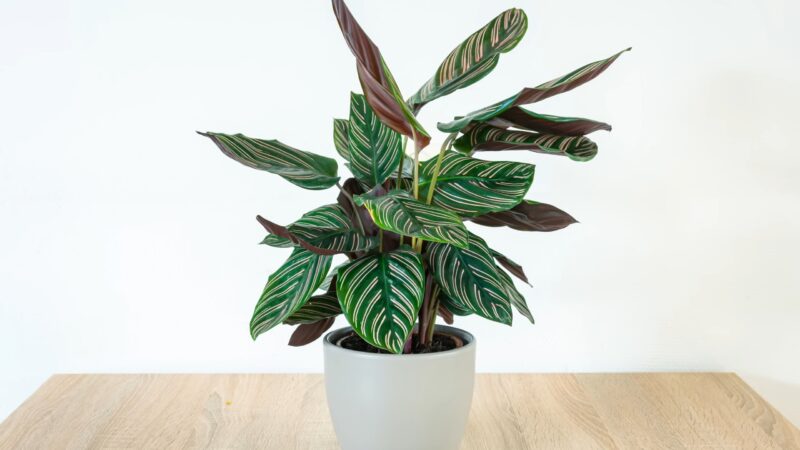Calathea Setosa stands out as a stunning addition to the indoor plant collection of all passionate houseplant lovers. This tropical beauty isn’t only known for its distinctive and visually striking foliage but also for its air-purifying capabilities.
But, many ask themselves how to look after this plant, especially those new to it. So let’s explain how you can grow and care about your Calathea Setosa.
Key takeaways
- Calathea Setosa is also known as the Never Never Plant, Compact Star Plant, Zebra Plant, or Prayer Plant.
- It’s a dual-purpose plant that enhances both the aesthetic and the air quality of indoor space.
- Its height is about 15-28 inches (40-70 cm).
- Calathea Setosa shouldn’t be exposed to direct sunlight, rather give it about 6-8 hours a day of indirect light.
- The ideal temperature for growth of Calathea Setosa is from 65°F to 85°F (18°C to 30°C)
- Calathea Setosa thrives in humidity levels between 50% and 70%
Origin of Calathea Setosa
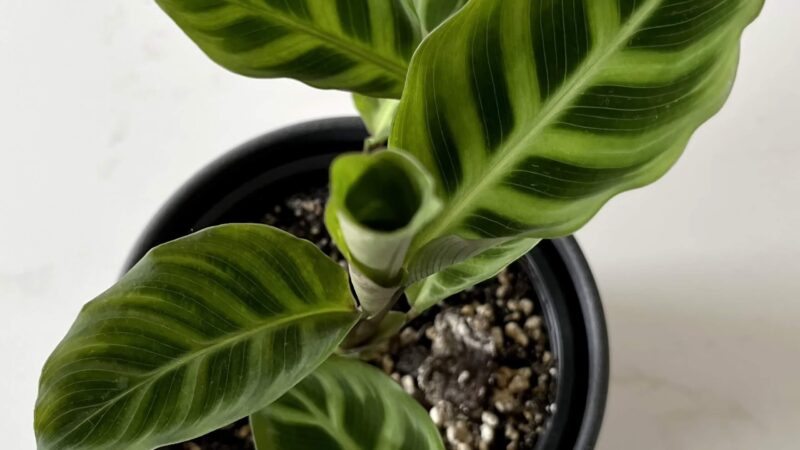
It originates from tropical regions (South America – Brazil), which is key to understanding its care requirements.
This plant can grow to a height of 15-28 inches (40-70 cm), making it a sizable yet manageable plant for indoor environments. Its leaves are its most striking feature, large and broad, with a bicolored and variegated pattern that combines silver with dark green veins on the top and a rich purple underneath. This variegation not only adds a splash of color to any room but also showcases the plant’s unique ability to exhibit nyctinasty – a process where its leaves close at night and reopen in the morning, adding a dynamic element to its presence.
Fun Fact: Calathea Setosa is affectionately known as the “Prayer Plant” due to its unique leaf movement. At night, the plant’s leaves fold upwards, resembling praying hands. This mesmerizing behavior is thought to help the plant optimally capture the sun’s rays during different times of the day, earning it the moniker “Prayer Plant.”
Light Requirements
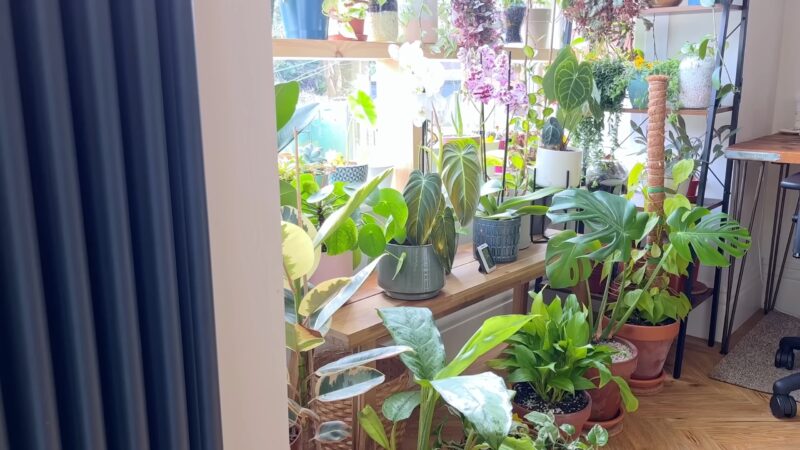
Calathea Setosa thrives in filtered or partial sunlight, mimicking the dappled light of its natural tropical habitat. Direct sunlight should be avoided, as it can scorch the leaves, leading to fading of the vibrant colors that make this plant so appealing.
Positioning the plant near a window that receives indirect sunlight or using sheer curtains to filter the light can provide the ideal lighting conditions for it to flourish.
Soil
Calathea Setosa requires loamy, well-drained soil with a slightly acidic pH of around 6.5. The potting mix should be composed of peat moss, perlite, vermiculite, and a small amount of well-rotted compost or leaf mold to provide the perfect environment for its roots. This blend ensures adequate moisture retention without waterlogging, which is critical for preventing root rot.
Watering Needs
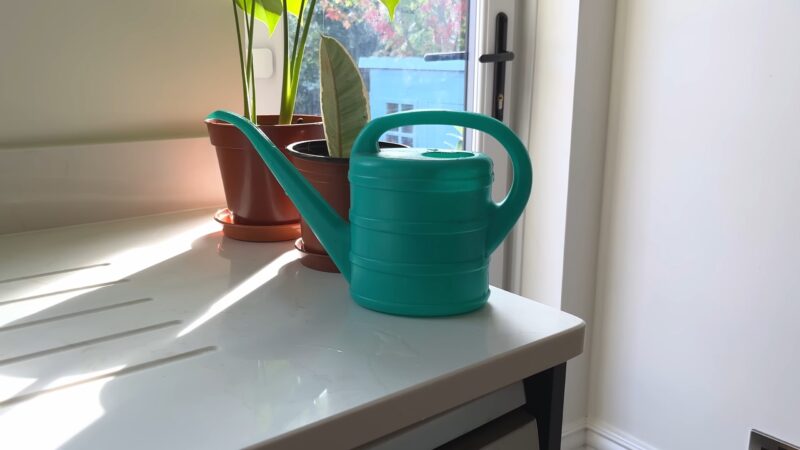
Watering once a week or when the top layer of soil feels dry to the touch is a good rule of thumb, with a reduction in frequency during the winter months when the plant’s growth slows down.
When watering, use room temperature water to avoid shocking the plant with temperature extremes. Additionally, water the plant thoroughly, ensuring that water reaches the entire root ball. Allow any excess water to drain away freely from the pot to prevent waterlogging.
During the growing season, typically spring and summer, Calathea Setosa may require more frequent watering due to increased growth and evaporation. In contrast, during the dormant winter months, water sparingly to prevent waterlogging and root rot.
Temperature and Humidity
Given its tropical origins, Calathea Setosa prefers warm and humid conditions. Ideal temperatures range from 65°F to 85°F (18°C to 30°C), which typically aligns with common indoor temperature settings, making it a suitable houseplant.
However, it’s the humidity that often requires extra attention; this plant thrives in humidity levels between 50% and 70%. In dryer environments, increasing humidity can be achieved through methods such as placing a humidifier nearby, grouping plants together, or placing the plant on a pebble tray filled with water.
Fertilization and Pruning
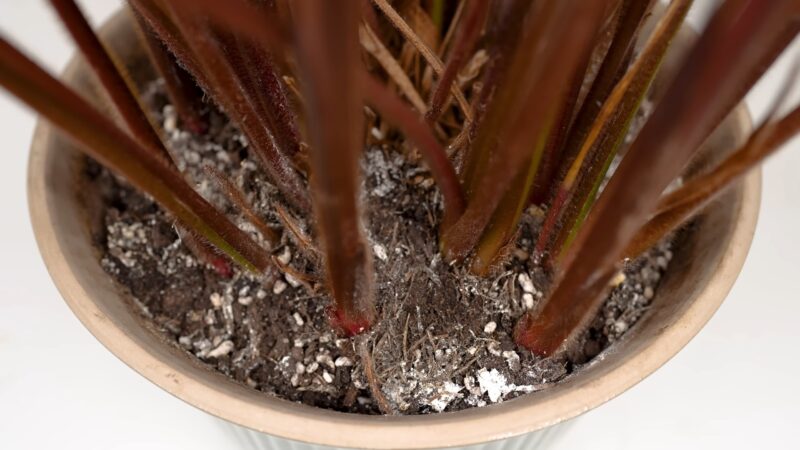
Fertilizing Calathea Setosa once a month during the spring and summer months with a well-balanced liquid fertilizer supports its growth and leaf development. It’s important to follow the recommended dilution rates to avoid over-fertilization, which can harm the plant.
Pruning is another aspect of care that should not be overlooked. Removing brown, yellowing, or damaged leaves not only improves the plant’s appearance but also promotes healthy growth by allowing the plant to focus its energy on new, healthy leaves.
Propagation and Repotting
Propagation of Calathea Setosa is best achieved through division during the spring repotting. This method allows for the plant to be gently separated into smaller plants, each with its root system, which can then be potted individually.
Speaking of repotting, this should occur every 1-2 years, or when the plant has outgrown its current pot. Choosing a new pot that is not more than 1 inch larger than the previous one is advisable to prevent excess soil from retaining too much moisture.
Common Pests
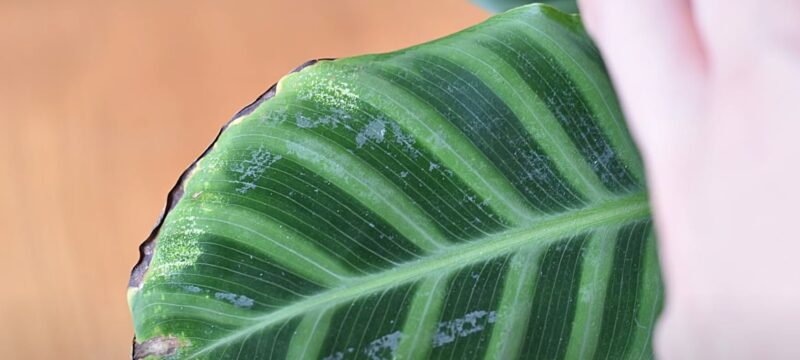
Calathea Setosa may encounter certain pests that require attention. Identifying and addressing these issues promptly is crucial to maintaining the health and vitality of your plant.
Spider Mites (Tetranychidae)
They are tiny arachnids that feed on the sap of plants, including Calathea Setosa. Infestations typically manifest as stippling on leaves, webbing, and eventual leaf discoloration. To combat spider mites, regularly inspect the undersides of leaves and treat affected areas with insecticidal soap or neem oil. Increasing humidity levels can also help deter these pests.
Whiteflies (Aleyrodidae)
They are small, winged insects that congregate on the undersides of leaves, sucking sap and causing leaf yellowing and wilting. Infestations can be controlled by using sticky traps, insecticidal soap, or neem oil. Pruning heavily infested leaves and maintaining good airflow around the plant can also aid in eradication.
Scale Insects (Coccidae)
They are immobile pests that attach themselves to plant stems and leaves, feeding on sap and secreting a protective shell-like covering. Symptoms of scale infestation include yellowing leaves, stunted growth, and leaf drop. Remove scales manually with a soft brush or cotton swab dipped in rubbing alcohol, repeating the process regularly until the infestation is under control.
Aphids (Aphididae)
They are small, soft-bodied insects that cluster on new growth, feeding on plant sap and excreting honeydew, which can attract ants and promote the growth of sooty mold. Control aphid populations by rinsing plants with a strong stream of water, applying insecticidal soap or neem oil, or introducing natural predators such as ladybugs or lacewings.
Mealybugs (Pseudococcidae)
They are soft-bodied insects covered in a white, waxy substance, often found in clusters on stems and leaf joints. They feed on plant sap, causing leaf yellowing, wilting, and stunted growth. Remove mealybugs manually with a cotton swab dipped in rubbing alcohol, focusing on affected areas. Repeat the process regularly to prevent reinfestation.
Common Diseases
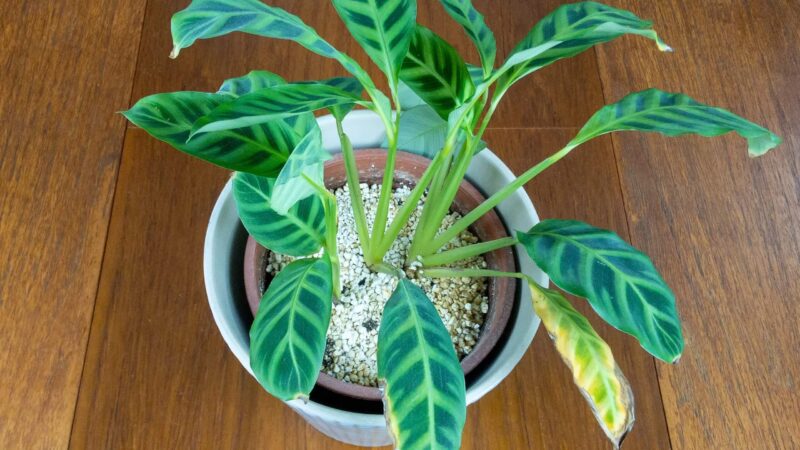
Calathea Setosa is susceptible to certain diseases, but proper care and maintenance can help prevent their occurrence.
Brown Leaf Tips
They’re often caused by underwatering, low humidity, or excessive fertilizer salts in the soil. To remedy this problem, ensure that the plant is watered regularly, maintain humidity levels, and flush the soil periodically to remove excess salts.
Drooping Leaves
They may indicate overwatering, underwatering, or environmental stress. Evaluate the plant’s watering schedule, adjust as needed, and ensure that it’s not exposed to drafts or extreme temperatures.
Yellow Leaves
They can result from various factors, including overwatering, underwatering, nutrient deficiencies, or pest infestations. Identify the underlying cause and take appropriate measures to address it, such as adjusting watering practices, fertilizing, or treating pests.
Root Rot
This is a fungal disease caused by overwatering or poorly draining soil, leading to the decay of the plant’s root system. To prevent root rot, ensure proper drainage by using well-draining soil and pots with drainage holes, and avoid overwatering the plant.
Safety Considerations
Calathea Setosa is non-toxic to humans, dogs, and cats, making it an excellent choice for pet-friendly households. But, it’s advisable to keep the plant out of reach of children and energetic pets to prevent accidental damage. With proper care and attention, Calathea Setosa can thrive and enhance your indoor space with its captivating beauty.
Similar Plants to Explore
If you’re drawn to the allure of Calathea Setosa, consider exploring other members of the Calathea genus for a diverse botanical collection, such as:
- Calathea Ornata
- Calathea Makoyana
- Calathea Beauty Star
- Calathea Orbifolia
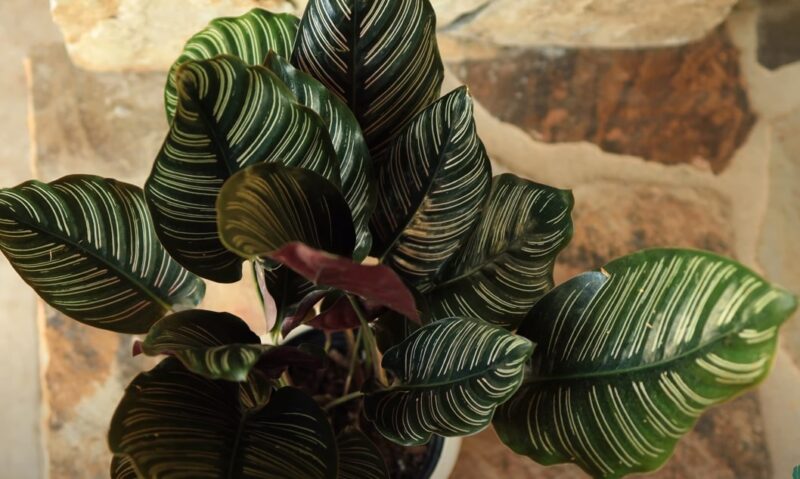
These are all excellent options that share similar care requirements and stunning foliage patterns.
Gift idea: The nocturnal activity of Calathea Setosa’s moving leaves has inspired its symbolism of new beginnings. The phrase “to turn over a new leaf” is aptly associated with this plant, as it reflects the rejuvenating and transformative nature of new starts. Calathea Setosa serves as a reminder of the possibilities that each day brings and the potential for growth and renewal.
FAQs
Where should I put it in my house?
Calathea Setosa, like bonsai trees, thrives in areas with bright, indirect sunlight, like east or north-facing windows, avoiding direct sunlight that can harm its delicate foliage.
Does Calathea Setosa like water on leaves?
While it enjoys high humidity, it’s best to avoid wetting its leaves to prevent fungal diseases and leaf damage. Water the soil directly at the base of the plant.
Is this a low-maintenance plant?
Calathea Setosa is generally low-maintenance but thrives with consistent care. Attention to watering, humidity, and light levels is essential for vibrant foliage and overall health.
Does it plant a flower?
Calathea Setosa can produce small, inconspicuous flowers, but its main allure lies in its striking foliage, not its blooms.
Can I propagate my plant by leaf cuttings?
It’s possible, but leaf cuttings have a lower success rate compared to stem cuttings or division for propagation.
Can I use tap water to water my Calathea Setosa?
Tap water can be used, but consider using filtered or distilled water to avoid potential harm from minerals or chemicals.
Summary
Calathea Setosa is a plant that beautifies indoor spaces with its striking foliage but also contributes to a healthier living environment through its air-purifying properties. By providing the ideal growing conditions, proper watering and fertilizing, and addressing common pests and diseases promptly, you can enjoy the beauty of this tropical plant in your home or office. Remember to prioritize humidity and temperature levels, stay vigilant against pests, and explore other related species to expand your botanical repertoire.
With dedication and care, your Calathea Setosa will thrive and brighten your indoor environment for years to come.
